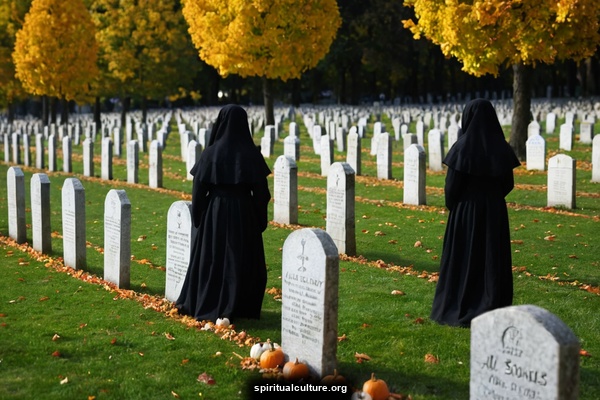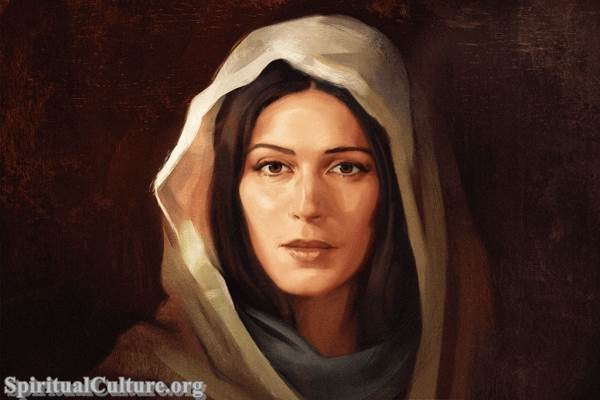All Souls’ Day is a significant occasion observed by millions of Christians worldwide, particularly in the Roman Catholic Church. Held annually on November 2nd, it is a solemn day dedicated to remembering, praying for, and honoring the souls of the departed, especially those believed to be in Purgatory. Its rich history, spiritual depth, and diverse cultural expressions make it one of the most profound observances in the Christian liturgical calendar.

In this extensive guide, we delve into the origins, theological foundations, and global traditions of All Souls’ Day, while also exploring its relevance in modern times. With over 4000 words of detailed insights, this article will serve as your ultimate resource to understand this sacred day.
1. The Origins of All Souls’ Day: A Historical Journey
1.1. The Early Christian Tradition of Praying for the Dead
The roots of All Souls’ Day can be traced back to the early Christian practice of praying for the deceased, a custom grounded in the belief in the efficacy of intercessory prayer. By the second century, Christians were commemorating the dead through special prayers and offerings, asking for God’s mercy on their souls.
This practice was inspired by Jewish traditions and biblical references, such as in 2 Maccabees 12:46:
“It is therefore a holy and wholesome thought to pray for the dead, that they may be loosed from sins.”
Praying for the dead was seen as an act of love and charity, reinforcing the communal bond among the living and the departed.
1.2. The Role of St. Odilo of Cluny
The formal observance of All Souls’ Day began in the 10th century, largely credited to St. Odilo of Cluny. As the abbot of the influential Benedictine monastery in Cluny, France, St. Odilo introduced the practice of dedicating November 2nd to the remembrance of all departed souls. He mandated this observance across all Cluniac monasteries, and it soon spread throughout Europe.
By the 14th century, All Souls’ Day had become an official feast day in the Roman Catholic Church, marked by liturgical prayers, Masses, and other rituals.
1.3. The Influence of Medieval Christianity
During the Middle Ages, the Catholic Church further developed the theology of Purgatory, a state of purification for souls on their way to Heaven. The growing emphasis on this doctrine heightened the importance of All Souls’ Day as a means of aiding these souls through prayers, indulgences, and almsgiving.
2. Theological Foundations of All Souls’ Day
2.1. The Doctrine of Purgatory
Central to All Souls’ Day is the Catholic teaching on Purgatory. According to Church doctrine, Purgatory is a temporary state where souls undergo purification to attain the holiness required for entrance into Heaven.
The concept is supported by several biblical passages, including:
- 1 Corinthians 3:15:
“If anyone’s work is burned, he will suffer loss; but he himself will be saved, yet so as through fire.”
- Matthew 12:32, which suggests the possibility of forgiveness in the age to come.
Prayers, Masses, and acts of charity offered by the living are believed to assist these souls in their journey toward eternal rest.
2.2. The Communion of Saints
The theological foundation of All Souls’ Day is also rooted in the concept of the Communion of Saints, which encompasses three groups:
- The Church Triumphant: The saints in Heaven.
- The Church Militant: The faithful on Earth.
- The Church Penitent: The souls in Purgatory.
This interconnected relationship emphasizes that the prayers of the living can benefit the dead, reflecting the profound unity within the body of Christ.
3. Liturgical and Devotional Practices
3.1. The Role of the Holy Mass
The Holy Mass is central to All Souls’ Day observances. Special Requiem Masses are offered for the repose of the souls of the faithful departed. The liturgy often includes:
- The chanting of the Dies Irae, a medieval Latin hymn reflecting on the Last Judgment.
- The use of black or violet vestments symbolizing mourning and penitence.
3.2. Prayers for the Dead
In addition to attending Mass, Catholics are encouraged to pray for the dead using specific prayers such as:
- The Eternal Rest Prayer:
“Eternal rest grant unto them, O Lord, and let perpetual light shine upon them. May they rest in peace. Amen.”
- The Rosary for the Dead: A devotional practice that combines traditional prayers with meditation on the mysteries of Christ’s life and resurrection.
3.3. Visiting Cemeteries
Visiting the graves of loved ones is a longstanding tradition on All Souls’ Day. Families clean and decorate the graves with flowers, candles, and personal mementos, offering prayers for the deceased. In some regions, this practice is accompanied by blessings performed by priests.
4. Cultural Expressions Around the World
4.1. Día de los Muertos in Mexico
In Mexico, All Souls’ Day is celebrated as part of Día de los Muertos (Day of the Dead), a multi-day festival that blends indigenous traditions with Catholic beliefs. Families create elaborate ofrendas (altars) to honor their deceased relatives. These altars typically include:
- Marigolds, known as “flowers of the dead.”
- Sugar skulls and decorative skeleton figures.
- Photographs and favorite foods of the departed.
The festivities are both solemn and joyful, featuring music, dancing, and communal gatherings.
4.2. European Traditions
In many European countries, All Souls’ Day is marked by cemetery visits and communal rituals:
- Poland: Families light candles on graves, creating a sea of glowing lights that illuminate cemeteries.
- Italy: Traditional foods, such as fave dei morti (beans of the dead), are prepared and shared with family and friends.
4.3. The Philippines: Undas
In the Philippines, Undas is a time of family reunions and cemetery vigils. Families gather to honor their loved ones with prayers, food offerings, and shared memories. It is common to spend the entire day, and even the night, at the cemetery.
5. All Souls’ Day vs. All Saints’ Day
While closely related, All Souls’ Day and All Saints’ Day serve distinct purposes:
- All Saints’ Day (November 1): Celebrates all saints who have reached Heaven.
- All Souls’ Day (November 2): Focuses on praying for the souls in Purgatory.
Together, these two days are part of the Church’s broader observance of the Communion of Saints.
6. Contemporary Relevance of All Souls’ Day
6.1. Challenges in a Secular World
In an increasingly secularized society, the observance of All Souls’ Day has declined in some regions. However, the universal themes of remembrance, love, and hope continue to resonate, offering a meaningful way to honor the dead.
6.2. Virtual Commemorations
With the advent of digital technology, many people now commemorate All Souls’ Day through online platforms. Virtual Masses, social media tributes, and digital memorials allow individuals to participate in the observance regardless of physical location.
7. Ways to Observe All Souls’ Day
If you want to honor All Souls’ Day meaningfully, here are some suggestions:
- Attend a Requiem Mass: Offer your prayers and intentions for the departed.
- Pray for the Dead: Dedicate a Rosary or specific prayers to your loved ones.
- Visit Cemeteries: Light candles, clean graves, and spend time reflecting.
- Create a Home Altar: Display photos, candles, and flowers in memory of your loved ones.
- Perform Acts of Charity: Donate or volunteer in honor of the deceased.
8. Reflections and Prayers
8.1. Inspirational Reflections
All Souls’ Day invites us to reflect on the transient nature of life and the hope of eternal reunion:
- “Death is nothing else but going home to God, the bond of love will be unbroken for all eternity.” – Mother Teresa
- “In the evening of life, we will be judged on love alone.” – St. John of the Cross
8.2. Powerful Prayers
- The Prayer of St. Gertrude:
“Eternal Father, I offer Thee the Most Precious Blood of Thy Divine Son, Jesus, in union with the Masses said throughout the world today, for all the holy souls in Purgatory.”
9. Conclusion: The Enduring Power of All Souls’ Day
All Souls’ Day is more than a religious observance; it is a profound reminder of the bonds that connect us across life and death. By praying for the dead, we express love, gratitude, and hope, reaffirming our faith in the promise of eternal life.
Whether through ancient traditions or modern adaptations, All Souls’ Day continues to inspire and unite the faithful, offering a timeless message of compassion and remembrance for generations to come.


